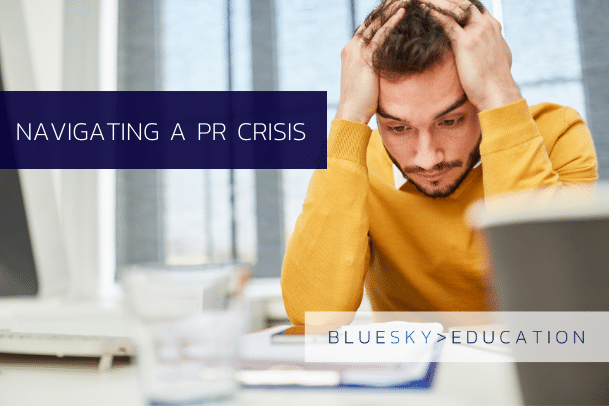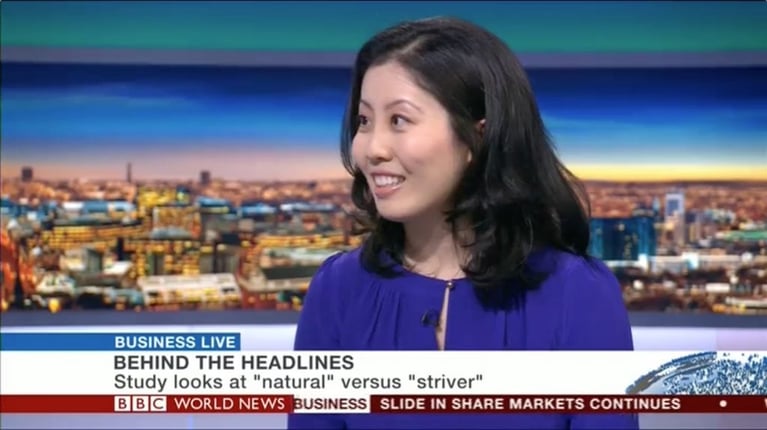
How to work effectively with media in India
India is the second most populated country in the world. It has an astounding diversity of religions, languages and cultures. Along with this, India has a flourishing media scene, with thousands of outlets operating in multiple languages. The mainstream media has more freedom that even before. The use of social media has grown exponentially with the increase in availability of technology. As a result, the media industry in India has expanded tremendously, so now is the time to focus on public relations and secure some great coverage.

How PRs should prepare for business education conferences
Business education conferences can be very productive, but they can be a stressful experience if you do not prepare properly.

How to hire a PR agency – advice for universities
Whether it’s for a short-term project or long-term support, are you considering hiring a PR agency? If so, how’s the best way to go about this as a university?

How to write a viral press release on academic research
Its trendy at the moment to say the ‘press release is dead’. And while I would agree that the media industry has gone through a dramatic shift in recent years, that doesn’t necessarily mean the demise of the press release. The problem is there’s a lot of wordy press releases sent to the wrong people which ultimately end up in the deleted folder of journalist’s emails. I think it’s fair to say that press releases have a PR problem. However, if it’s done right, the trusty press release is still a quick and effective way to target relevant journalists with just the information you want.

International PR offices – are they needed for international coverage?
You’re looking for a PR firm to help out with your international PR efforts and come across a firm that states “we have offices based in New York, London, Hong Kong, Paris and Berlin, in order to penetrate our key markets in the most effective way possible”.

Return on Investment: How to Measure the Real Value of PR
Return on Investment. The crux of so many PR client meetings. Gone are the days of walking into a client’s office with a stack of newspapers that they’ve been featured in since the beginning of your contract; no longer can the value of PR be realistically measured by how much the table shakes when you drop that stack of coverage. So, how can it be measured?

Who are you pitching to?
When sending a pitch to a journalist, what’s the first thing you need to check before hitting send? Checking your information is accurate perhaps? Making sure it’s short, swift and to the point? Making sure you’ve spelled their name correctly?

3 reasons why travel is key for good PR
Hans Christian Andersen once famously said that ‘to travel is to live’. And while my grandmother never left the British Isles – she was genuinely even afraid to cross big bridges near her home in the countryside – we now live in a world with sprawling cities, where we regularly board planes, cross borders and travel the world.

3 PR fails of the week
This last week has provided a lot of PR fails - which have been so awful, they have literally made headlines themselves. Here are my top three. Melania Trump The first, and possibly the worst, PR fail is Melania Trump’s jacket. It’s fair to say that President Trump and the first lady have faced a lot of criticism, but somehow, I think wearing a jacket to visit a migrant child detention centre that says ‘I really don’t care, do you?’ is possibly one of the most insensitive things Melania could have done. Unfortunately for her, Melania Trump's apparently empathetic visit to the Mexican border is now completely overshadowed by the unempathetic message on the back of her jacket. Burger King Another embarrassing PR fail this week comes from Russian Burger King. Obviously seizing the opportunity to make headlines with the world’s media spotlight on Russia thanks to the World Cup, Burger King Russia decided to create a social media campaign offering free burgers for life to women who get pregnant by a football player. “Each will receive 3 million rubles, and a lifelong supply of Whoppers. For these girls, it will be possible to get the best football genes and will lay down the success of the Russian national team on several generations ahead. Forward! We believe in you!" Burger King in Russia have since apologised for the social media campaign. I would have thought that Burger King wouldn’t want to encourage Russia having a bad reputation for playing on sexist stereotypes, particularly in advertising, but this campaign really felt like something from the 1950’s.

How to use social media for greater exposure of your media coverage
So, you secured a fantastic media opportunity for your institution and it has just resulted in a great piece of coverage, whether that’s print, online, or broadcast. How do you ensure that this coverage is generating the readership and getting the attention it deserves? Well, this is where social media comes in.

Why you should always meet your deadlines, and what to do when you don’t
Meeting deadlines is vital. It is not rocket science to see why this is such an important rule in PR.

How PRs should use Twitter as a professional tool
Social media platform Twitter boasts over 330 million global users, and has quickly become the go to site for journalists, PRs and the general population, to view and share news. With around three quarters of journalists using Twitter every day and over 70% of them stating that Twitter is a valuable professional tool, it harnesses the potential to be a great platform for PRs to utilise, to the benefit of themselves and their clients.

Old fashioned PR principles still get results
The media and its approach to news has changed, it’s not enough to churn out a press release and hope it will be picked up by established media such as The Financial Times, Times, Telegraph and Guardian.
What three films can teach us about PR
Now that I’ve entered the world of PR, I can see the lessons that some films can teach us about the varied world of public relations. I’ve selected three film quotes that stood out to me and the messages they convey about this industry. Be creative “Almost Famous” is the story of a young, up and coming journalist in the 1960s who is given the job of interviewing his favourite band. He ends up in a world of sex, drugs, and rock and roll, without his overprotective mother knowing, he ends up falling in love with one of the bands most infamous groupies. My favourite PR quote from the film is: “Is it hard to make us look cool?” Making your client appear interesting to the media is a major aspect of public relations, and sometimes it seems impossible to make them “look cool”. In the world of Business Education, sometimes clients want you distribute challenging research, or a story that might have already been told. This is why creativity is important, taking the time to come up with a new angle in order to provide the media with a fresh way of telling, or adding to, a story. If you can successfully execute this, you will build your clients' profiles and credibility around the world, essentially making them “look cool”. Don't over-complicate things “One Day” is about two university graduates who spend the night together after their graduation ceremony. Dexter and Em are shown each year on the same date to see where they are in their lives, sometimes they are together, sometimes they are not. The best PR quote from this film is: “I think we like to complicate things when really it’s quite simple”. To successful grab an editor’s attention you have to develop the knack of writing in a simple way, making the wording engaging and understandable. The same can be said when working with university research, to transfer it from academic language into a message that you can send to the media which is as simplistic as possible. This is the best way to reach a wider audience. Make the right decisions

Why relationship building is essential for PR success
Relationship building is key when it comes to gaining success in public relations – especially in the world of business schools.

Easy New Year’s Resolutions for PRs
Now is the time to make some professional resolutions which will make you a better, more productive PR person.

Cut out the complex words to get media attention
From the Daily Mirror to the Wall Street Journal, pretty much every widely-read newspaper uses clear language for their readers.

PRs, if you had one pearl of wisdom – what would it be?
Avoiding disaster, navigating networking, and pitching like a pro – what advice would our BlueSky team have for the world of the PR professional?

5 tips to make your pitch stand out from the crowd
Journalist’s jobs are becoming more and more time-pressed, with their inboxes increasingly flooded with PR’s pitches. Now more than ever, for a journalist to buy into a pitch, it needs to capture their attention. But how as a PR can you make your pitch stand out from the crowd ? Make sure it's newsworthy Journalists are inundated with pitches daily, so ones that are boring, uninteresting, and un-newsworthy are destined to fail before they’ve even been sent. ‘The 5 best paints to watch dry’, for example, will never get coverage no matter how amazing your pitch is, or how slow a news week it has been. It is a PR’s responsibility to evaluate whether or not their story is newsworthy before pitching it. Deciding this beforehand stops you from wasting both yours and the journalist’s time, and avoids disappointment when your efforts inevitably fail to deliver results. Have a creative, engaging headline The first part of a pitch that a journalist will read is the headline, and many journalists will decide whether or not they will bother to read on purely based on how interesting that headline is. This is why it is important you pay as much attention to crafting an effective email header as you do to your pitch, as this will encourage the journalist to read more. Make it relevant You could write the most amazing pitch in the world, but if it isn’t pitched to the right publication, it will never be read. For instance, a pitch about a world-changing bacon product that actually makes you lose weight (if only!!), will never be read if you’re pitching it to ‘The Vegetarian News’. Of course this is an extreme example, however it has its relevance. It is important that, as a PR, you research exactly which publications are interested in the news you wish to share and, more importantly, which journalists from these publications are writing about it. This does take time, but it is a worthwhile exercise. After all, it is far better to pitch to five relevant journalists than scatter your pitch to 50 journalists who are not. Make it short and snappy Journalists barely have time in their day to open all their e-mails, let alone read them thoroughly. So, what makes you think they will have time to read your pitch, which is as long as a thesis? You must make your pitch short, snappy and to the point, summarising the story and ensuring the journalist can fully understand its significance. Cut out all of the unnecessary information – a journalist will not want to read waffle. It is important to ensure that every single word in your pitch is carefully selected leaving the journalist wanting to know more. A pitch should be like a wine tasting, the journalist should have a small glass, and want to come back to you for the whole bottle. Do not oversell

The Politics of PR
Business and politics have intertwined for thousands of years, to the point where they are almost impossible to unpick.

5 Ingredients for a successful story
Not all news is news. And any PR professional doing their job properly knows that securing quality media coverage isn’t just about flinging every bit of information a client shares with them out into the world and hoping some of it gets noticed. We spend a great deal of time sifting through the information our clients share with us to find the stories that will make the best impact with their target audiences. But sometimes those stories that can be media gold aren’t always the easiest to spot, or even the easiest to communicate clearly and convincingly to your press contacts. To stand the best chance of success, there are five ingredients that need to be included in your pitches... 1. A clear focus What are you trying to communicate? Consider the information you are sharing and keep the message as clear, and simplistic as possible. Your pitch cannot be too lengthy or have too many tangents. A time-pressed journalist needs to be able to scan your pitch and immediately identify what you/your client is offering, and what their angle on that topic is. 2. Relevance It might sound obvious, but you’ve got to know your audience. Before pitching take the steps to ensure that the information you’re sharing with journalists is something which will appeal to each of their individual areas of expertise. What are they writing about? Have they already covered the topic you’re sharing? 3. A strong spokesperson… The ideas you put forward in your pitch are only as strong as the person who voices them. It is vital to ensure you pitch a person who can speak confidently and eloquently with the media, and have the experience and expertise to lend authority to their perspectives. 4. …With something new to say! It’s no good having a strong spokesperson if they’re only able to tell a journalist what they already know. Take the time to craft a new angle on the topic at hand with your spokesperson in order to provide your media targets with a fresh way of telling, or adding to a story.

How to become a PR champion
You have to believe in it yourself before you can convince other people of the power of PR and to become a PR champion.

What fake news means for PR
‘Fake news’ is a phrase that has unfortunately grown in popularity over the last four years thanks to Donald Trump, the 45th President of the United States.

How to write a headline
The art of writing catchy headlines is the difference between your article, or blog, reaching the eyes of your targeted readers or disappearing into the ether as they scroll or flick disinterestedly past. Learning how to write a headline really is key to both PR and content marketing.

Four tips on how to deal with a PR crisis
There is no such thing as a smoothly run business. All companies and institutions will have their ups and downs, their challenges and successes, and unfortunately even the best businesses at some point in their lifecycle will face a PR crisis eventually.

Best research in the media 2016
From how to improve online dating success – top tip: forget the anonymity feature – to how to navigate retirement, 2016 was a varied year in the world of press releases and pitches for our clients here at BlueSky Education. As another year ended, I looked back on the research I worked on during the past 12 months and highlighted some of my favourites.

How business schools can engage with companies
There are various stakeholders within a target company with whom it might be appropriate to discuss the topic of business education. Those in the C-suite, for example, are likely to take an interest in the training of their managers and executives. However, for the purpose of this post we are specifically looking at what is possibly the key group of stakeholders – HR.

Top 3 PR Quotes
Over a century ago Alvin Adams said: “Public relations are a key component of any operation in this day of instant communications and rightly inquisitive citizens.” Adams was an American businessman who pioneered express shipments by rail in the US – his words are as relevant today as they were then.
Cutting through the noise: Quirky PR for Business and Higher Education
Business Education is a mature market, and with so many programmes out there and relatively few publications writing about them, there is a constant competition between schools for worthwhile coverage. On the other side of the fence, journalists are under considerable pressure to deliver news from education institutions in a new and engaging way.

